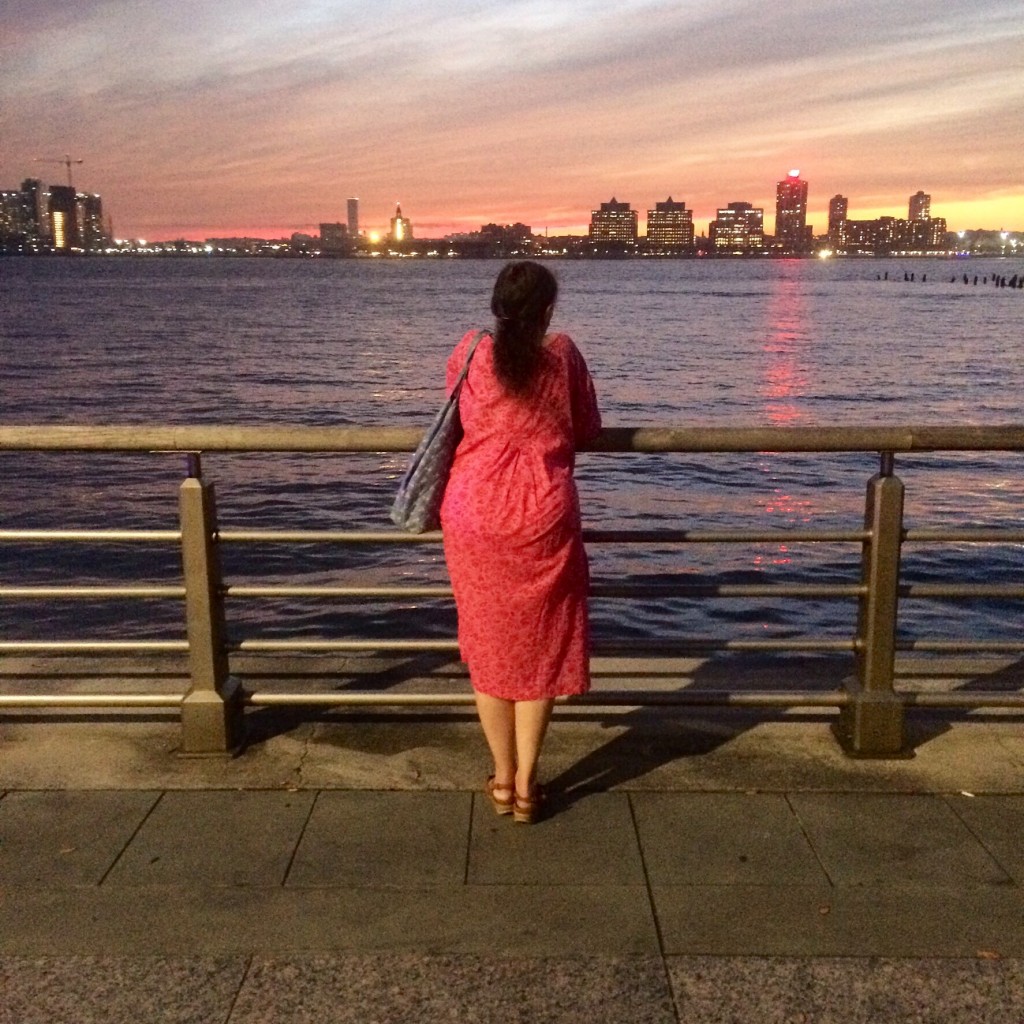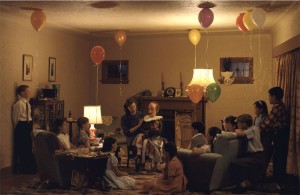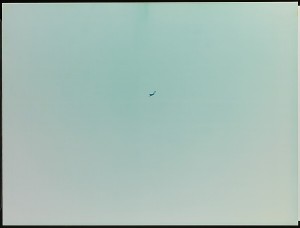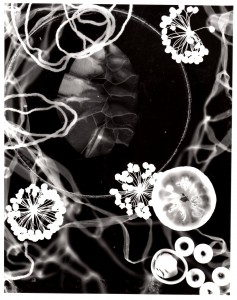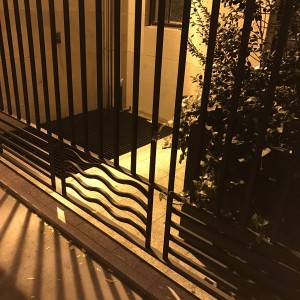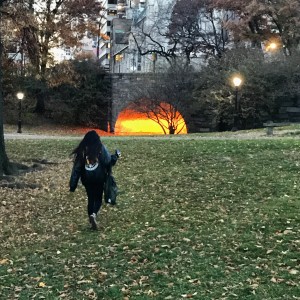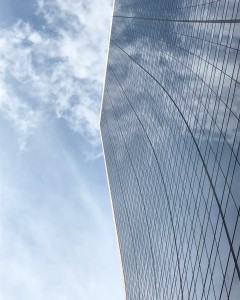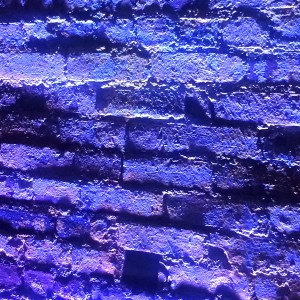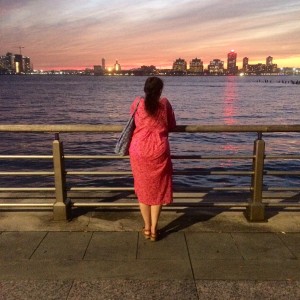Jeff Wall, A ventriloquist at a birthday party in October 1947, 1990, Transparency in lightbox,
Jack Goldstein, The Pull, 1976, Chromogenic print
Man Ray, Rayograph, 1922, photogram
My History of Photography
Edward Curtis was a photographer and ethnologist who photographed Native American tribes throughout the Pacific Northwest. He constructed a 20 volume series of photographs, each volume including 1500, for JP Morgan, that documented his expedition and experience living among the Native American tribes. He took portraits of these tribe members in traditional garments using the photogravure process. And although he occasionally photographed people with backgrounds, he usually took his portraits against a backdrop. By using a simple backdrop, he emphasizes the subject more than anything else, capturing their faces, their clothing, and their emotions. The photo series was completed in 20 years, and although it didn’t bring him fame or fortune, he photographed the faces of a society of people that city folk had never seen with such detail. Curtis also directed his first feature film, “In the Land of the Head Hunters” in 1914. It was the first feature film composed entirely of a Native American cast. His goal was to not only photograph but to document traditional Native American life before it disappeared. I am inspired by Curtis’ ability to photograph a traditional culture so close in proximity to its natural origins and in the way he used film as a medium to document traditional life.
Surrealism is an art movement that covers many types of media. It developed out of the Dada movement in the 1920s, a genre that had established the “anti-art” aesthetic. Surrealism blurs the distinction between dream and reality. It features illogical imagery that appears to be fake or from a dream. Surrealism photography was pioneered by Man Ray and Andre Breton who created their own worlds through their pictures. Surrealism heavily relies on light and shape to be fully understood. In Man Ray’s photograms, which he called “Rayographs,” he mixes outlines of light to create flat backgrounds of textural shapes. The result is like a haze you experience during the moment you begin to dream. Other surrealist photographers like Henri Cartier Bresson, Marcel Duchamp, and Salvador Dali created impossible looking photographs that featured items blending into each other or projected onto bodies. Although surrealism was criticised for its illogical tendencies and esoteric meaning, it gained momentum as an experimental genre. I am inspired by surrealism because it is a genre that pushes the boundaries of traditional art and solidified the idea that photography doesn’t have to capture the reality we see every day. In my photographs, I like to capture interesting shapes and textures and I like to distort them using shadows and contrast. I like my photos to have lots of information packed into them. I want to capture images that look impossible, but are in fact real. Surrealist imagery inspires me to embrace illusion.
Pictorialism was an aesthetic movement that influenced photography in the late 19th and early 20th centuries. In the 19th century, there was much debate on whether photography should be considered a true artistic medium. Pictorialism set out to prove that photography was not just a captured moment of reality. Pictorialists believed that a photograph was like a painting, a truly one-of a-kind piece of art unique to the artist’s creative center. Pictorialist pictures are often very hazy, simple, serene and beautiful, like an Impressionist painting. Pictorialists like Elias Goldensky often captured young women at rest or vast fields of farmlands. Pictorialist photographs were made for their beauty, utilising the same inspiration a painter has when he or she creates a landscape. Pictorialists didn’t so much record their images as they did create them. Pictorialist photographs often feature custom edging and scraping and are printed in various tones of black and white. How the photograph looked was determined by the photographer’s edits. Pictorialism was widely accepted as a true aesthetic because it was heavily influenced by 19th century paintings, the domineering medium of art at the time. I am inspired by pictorialism today for different reasons. The feeling of serenity combined with pictoralism’s ancient appearance hearken back to the early 19th century perfectly. I am inspired by how a photographic genre can fit in so well with a time period and its economy.
The gum bichromate was a photography process in the 19th century that used sensitive dichromates to produce positive images on sheets. The dichromates were mixed in with the gum and a touch of pigment, which means that the photo could be custom colored. The mixture was then painted on the paper, exposed to light and submerged in warm water to wash off areas not exposed by light. This process was often used by pictorialists as it involves lots of craftsmanship. The lasting images had much detail and were quite permanent. Because there is a bit of manual work, photographers like Alfred Stieglitz felt rewarded whenever they produced a gum bichromate image. It is interested to note how customized the whole process can be depending on the type of pigment used. I am inspired by this process because it is so colorful. It is one of the few processes that you can manually and physically alter the color. It is the inspiration for the “Tint” feature on photoshop, which is a setting I often fiddle around with.
In the 1910s, around the time of the First World War, the dada movement started to become widespread. Dada was anti-war, anti-establishment, and anti-art. It usually depicted nonsensical doodles or machinery, random letters and numbers, collages from newspaper magazines. The pictures challenged traditional art narrative and aesthetic, which produced the popular debate over what is truly considered art. If everything is art, then nothing is art. One of the pioneers of Dada, Marcel Duchamp, made the first photos of readymades, or found common objects. His entire scope produced lots of imagery of well-known and omnipresent things, each one challenging the entire history of art. By photographing everyday objects, there is no “surprise” factor, and nothing really jumps out. Duchamp’s work “L.H.O.O.Q.” which is simply “Mona Lisa” painted with a moustache. At the bottom of it, the letters, “L.H.O.O.Q.” are spelled out, which when spoken, sound like the French words for “She has a nice ass.” This piece of art took the most well-known image at the time and completely voided its artistic value and its seriousness. Marcel Duchamp created his own aesthetic out of having no aesthetic. He experimented with commodities, usual objects, nothing that wows on the surface, but is grand in how it challenges the history of art and what constitutes art in general.
Jack Goldstein’s “The Pull” is a three photograph series. Each photo consists of a lone figure (a scuba diver, an astronaut, and a falling person). The figures are tiny compared to the vast amount of monochromatic space they are surrounded in. These photos display a unique blend of minimalism and surrealism, two genres that don’t usually co-mingle. The results are photographs that feature a minimal background of space with the hazy, dreamlike feel of a surrealist photograph. The photos are not clear until one puts their face right up to them to see the tiny figures. Goldstein appropriated these images from unknown printing sources, which further isolates them from their original contexts. This produces a feeling similar to waking up from a dream, when one’s mind is at its haziest and most insular. It is fitting then, that the figures are all actions typically found in dreams. The scuba diver and the astronaut may represent desires and goals, while the falling figure represents a nightmare. This idea is augmented by the placement of the faller at the bottom of the frame, making it unknown whatever the man is about the fall into.
Jeff Wall is a contemporary Canadian photographer known for his large scale photographs that are typically back-lit and transparent. Wall’s photographs are elaborate productions, and they are often staged to appear as though the moment was a scene in a film. His photos capture social and hierarchical divides in an ostensibly candid way. Although they are staged, he mimics occurrences and interactions that he has witnessed in real life. He plans each and every photo with obsessive detail, prioritizing his appreciation for narrative. In this way, he plans his shots like a film director, which is what I aspire to be one day. He also deals with homage, as in his 1993 photograph, “A Sudden Gust of Wind” which mimics Katsushika Hokusai’s “Yejiri Station, Province of Suruga” from 1832. In addition to photographing people, he also photographed destruction and chaos as in his 1982 installation “The Destroyed Room” Wall’s photographs have these great massive qualities to them. You can feel the heaviness just by looking at them. I like how smart he is with his framing, as he seems to know how to frame the camera just right so that he gets the most information in one picture. The result is very cinematic which inspires me in my photography.
Edward Steichen was a portrait photographer who had originally dabbled in painting. In 1911, he, along with Adolph DeMeyer, made some of the first considered fashion photographs, featuring women in gowns. Steichen worked for Vogue and Vanity Fair, and was at one point the highest paid photographer in the world. He eventually became the Director of the Department of Photography at the MoMA. Steichen took a very aesthetic, modernist approach to his photos. He believed that “a woman, when she looked at a picture of a gown, should be able to form a very good idea of how that gown was put together and what it looked like.” He experimented with many different backgrounds and tonal ranges. He was also responsible for creating the first ever color fashion photograph in 1945. Steichen’s work is largely influential. His photos mark a changing capitalist economy. He can be credited for sparking a large interest in fashion, one that continues until this day. And although Steichen is credited with fashion, he believed that the model was just as important as her clothing. Therefore, he used the opportunity to shape women’s bodies in an obscure manner. He placed emphasis on whatever part of the body the selling product adhered to. This occasionally resulted in the model contorting to unconventional positions. This added to his modernist technique he used when photographing, which I find fascinating. In my photography, I like to capture contorted unconventional body shapes to explore the infinite possibilities of body sizes and shapes.
